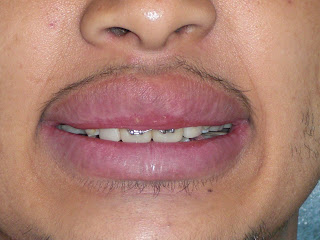MINIMIZED DENTAL IMPLANT REPLACEMENT OF THE UPPER LEFT CANINE IMMEDIATELY AFTER EXTRACTION

This lady presented with a retained primary left canine due to a congenitally missing permanent canine. Since it was already mobile and inflamed, we extracted it and immediately placed in a mini dental implant. A composite BUD was moulded on with the MOSTDIMOLD and the resulting abutment was shaped. An impression was taken and sent for a PFM which was then cemented the following visit. In this particular case, there was some resorption of the adjacent premolar root due probably to the prolonged retention of the chronically inflamed primary canine next to it. A flap was raised and all infamed tissue was curretted thoroughly before placement of the mini. Three years later, an xray revealed that the resorbed portion of the root has been filled with bone and the implant supported canine was still looking good and biting strong. The bone had filled up the socket and climbed up the mini dental implant to the max, thus giving the mucosa good support, hence the wonderful aesthetics. Put minis



